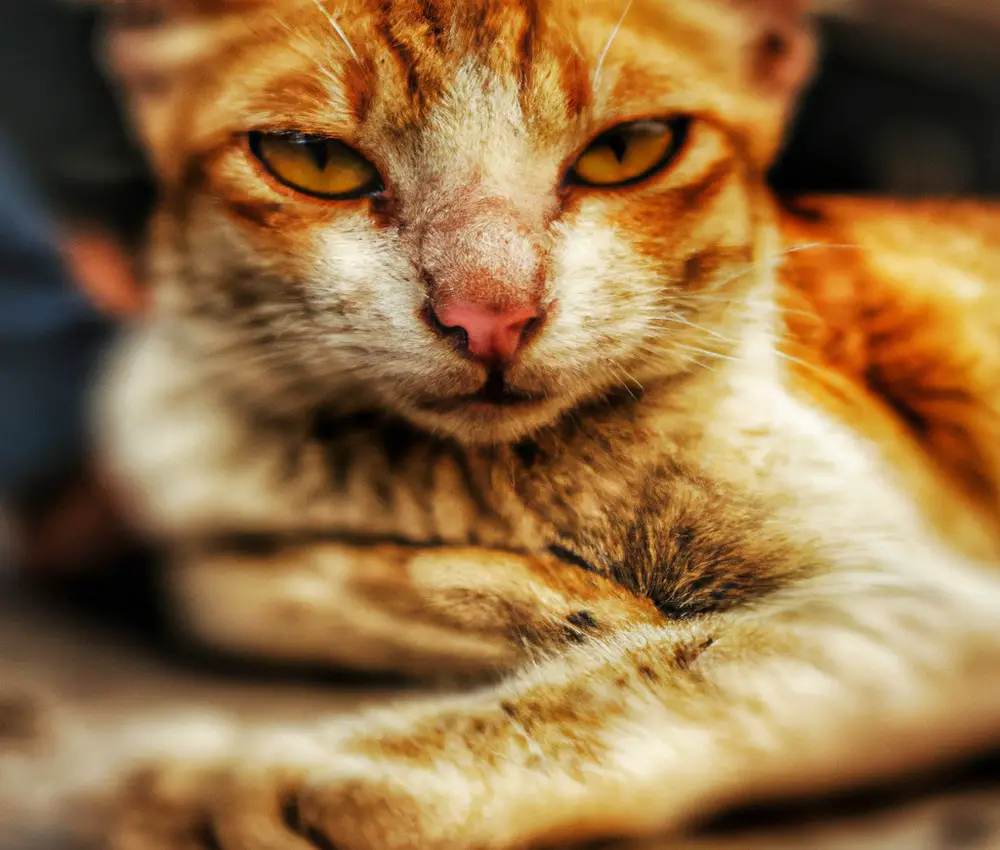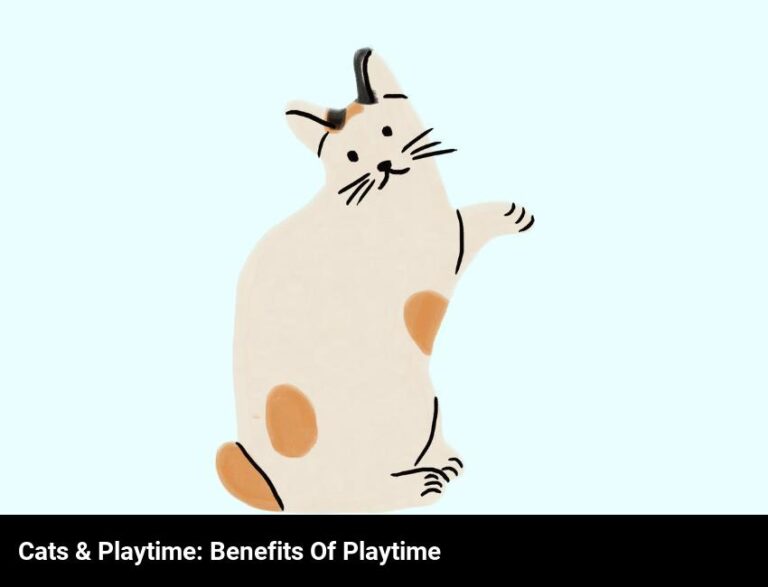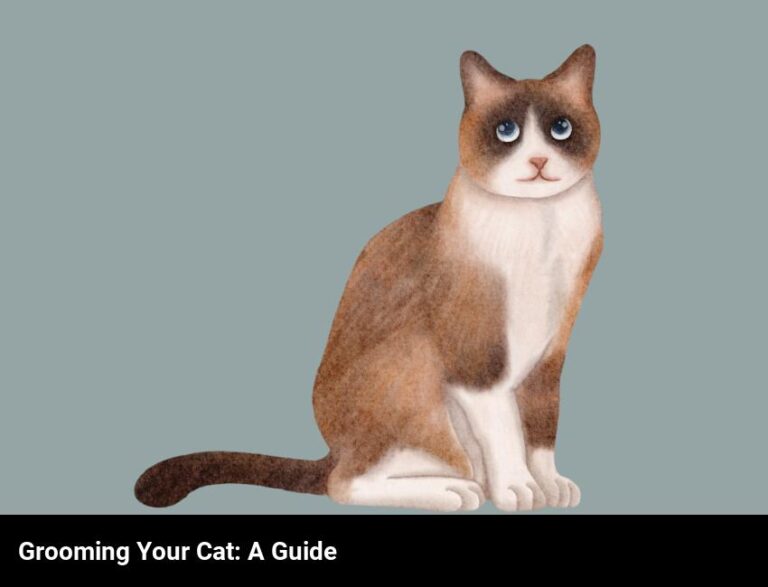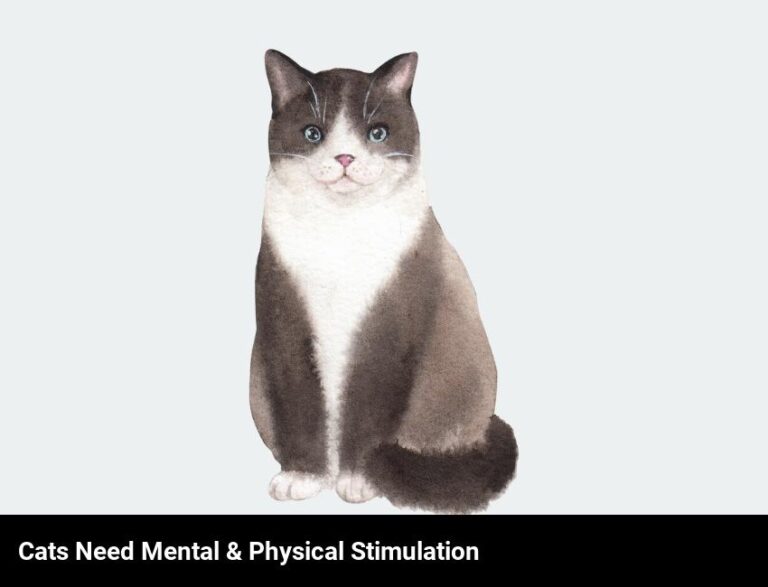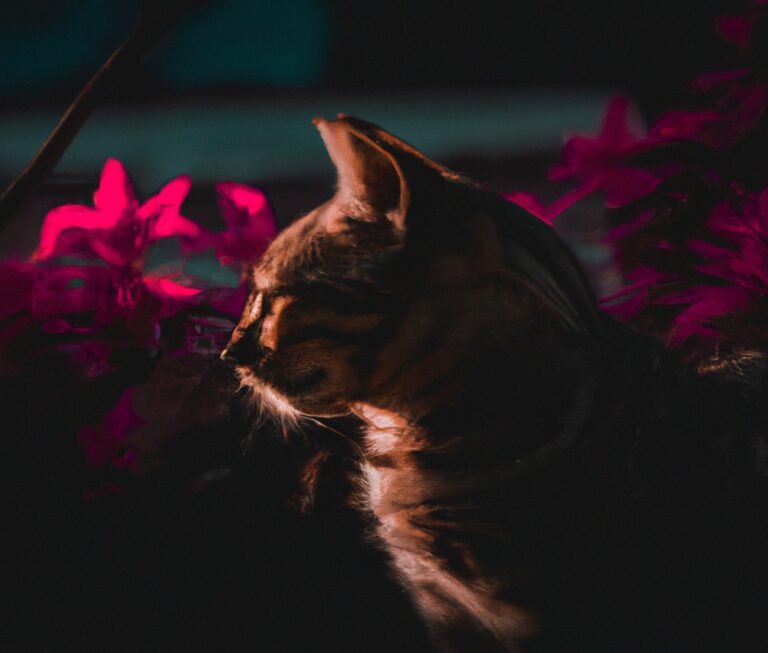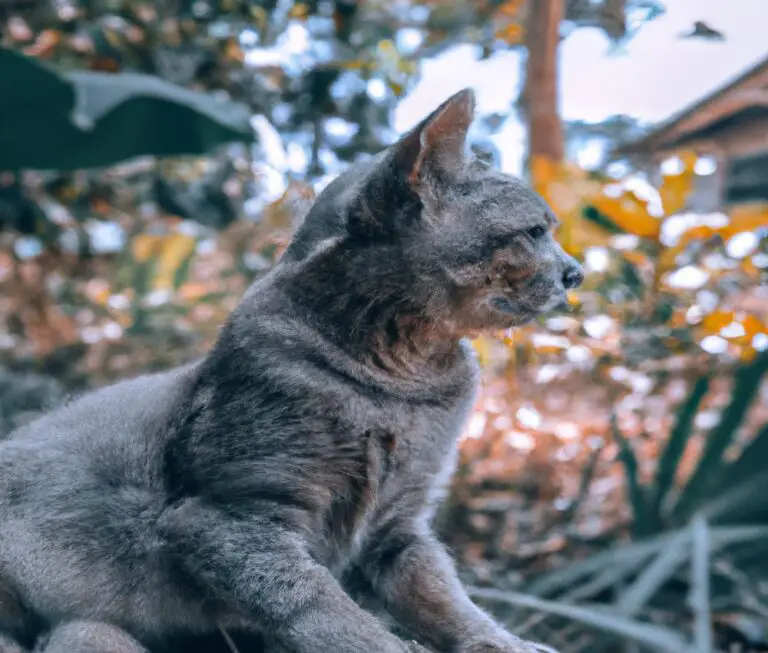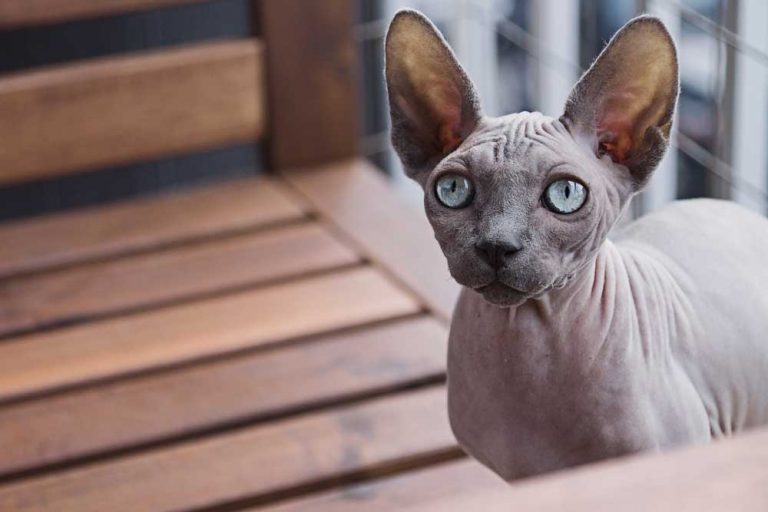Why Does My Cat Arch Her Back And Run Sideways When Playing?
Key Takeaways:
- Cats arch their backs and run sideways when playing to display excitement and engage their hunting instincts.
- This behavior is called the “playful pounce” and is a way for cats to mimic the movements they would use while hunting prey.
- Arching the back helps cats maintain balance and provides them with a better view of their surroundings during playtime.
- Sideways running allows cats to change direction quickly and adds an element of unpredictability to their play movements.
Have you ever witnessed your cat arching her back and running sideways with wild abandon during playtime?
It’s a sight that can both intrigue and perplex us as cat owners.
But fear not, for there is a scientific explanation behind this mysterious behavior! In this article, we will delve into the intriguing world of feline body language, exploring the reasons why your cat displays these quirky actions.
We’ll discuss the role of sensory overload, the release of energy and exercise, mimicked hunting tactics, and even how it ties into social bonding and communication.
Get ready to unlock the fascinating secrets behind your cat’s playful antics!
| Reasons | Explanation |
|---|---|
| Play behavior | When cats are playing, they often exhibit various playful behaviors, such as arching their back and running sideways. This behavior helps them to show their agility and flexibility and can be seen as a hunting behavior. |
| Energy release | Arching the back and running sideways allows cats to release pent-up energy. It is a way for them to burn off excess energy and engage in physical activity. |
| Instinctual behavior | Arching the back and running sideways is an instinctual behavior that stems from their wild ancestors. In the wild, this behavior helps them to pounce on prey and maneuver quickly in confined spaces. |
| Communication | Arching the back and running sideways can also be a form of communication. It can be a playful invitation for other cats or humans to join in the play or a way of expressing excitement and joy. |
The Science Behind Cats’ Behaviors
Ever wondered why your cat behaves the way it does?
Let’s delve into the science behind cats’ behaviors.
Understanding Feline Body Language
Understanding feline body language is essential for cat owners.
Here are some key signals you should know:
- Tail Position: A relaxed tail indicates contentment, while an upright, puffed tail signifies aggression or fear.
- Ear Movements: Ears pointing forward show curiosity, while flattened ears indicate fear or aggression.
- Purring: Purring usually indicates contentment or relaxation, but it can also be a sign of stress or pain.
- Body Posture: An arched back is often a defensive gesture, while a crouched position suggests fear.
- Vocalizations: Different sounds, such as meowing, purring, hissing, or growling, convey various emotions or needs.
By understanding these subtle cues, you can better interpret your cat’s feelings and respond appropriately.
It can help strengthen your bond with your feline friend and ensure their well-being.
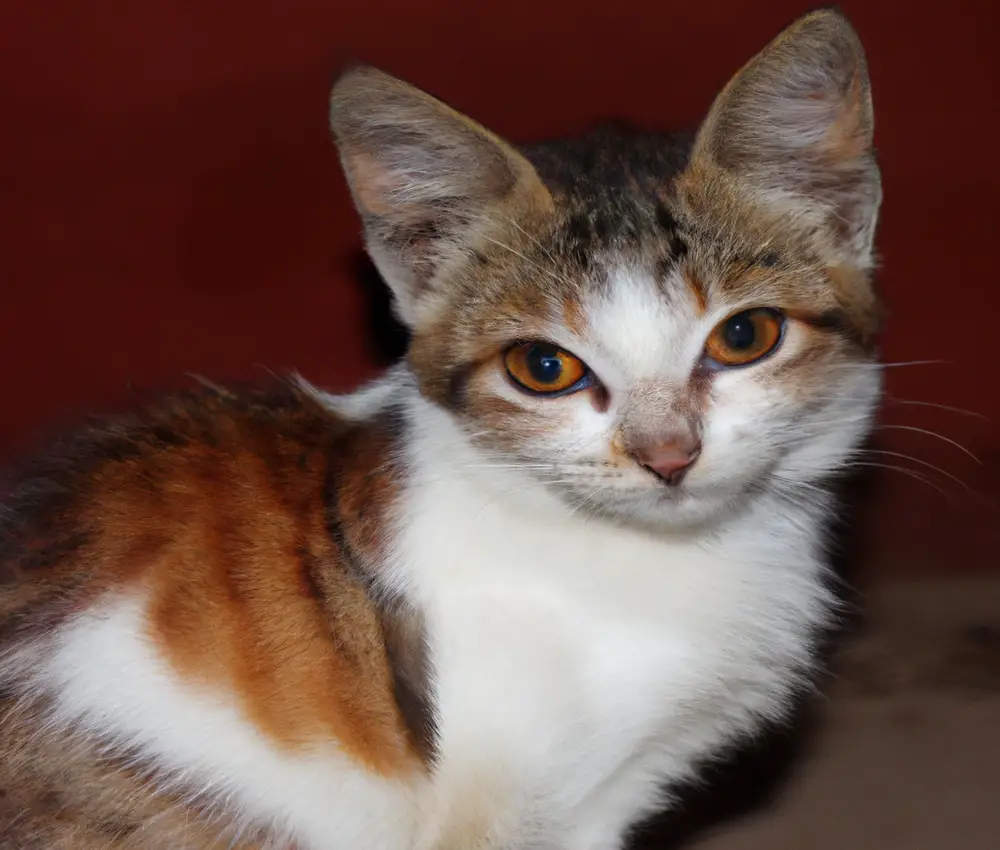
The Arching Back Mystery
The Arching Back Mystery Have you ever wondered why your cat arches her back when playing?
Well, there’s actually a scientific reason behind it.
When a cat arches her back, she is stretching her spine and preparing her muscles for action.
It’s like a natural warm-up to get ready for a vigorous play session.
This behavior also serves as a display of confidence and a way to intimidate potential threats.
So next time you see your cat arching her back, know that she’s just getting ready to have some fun!
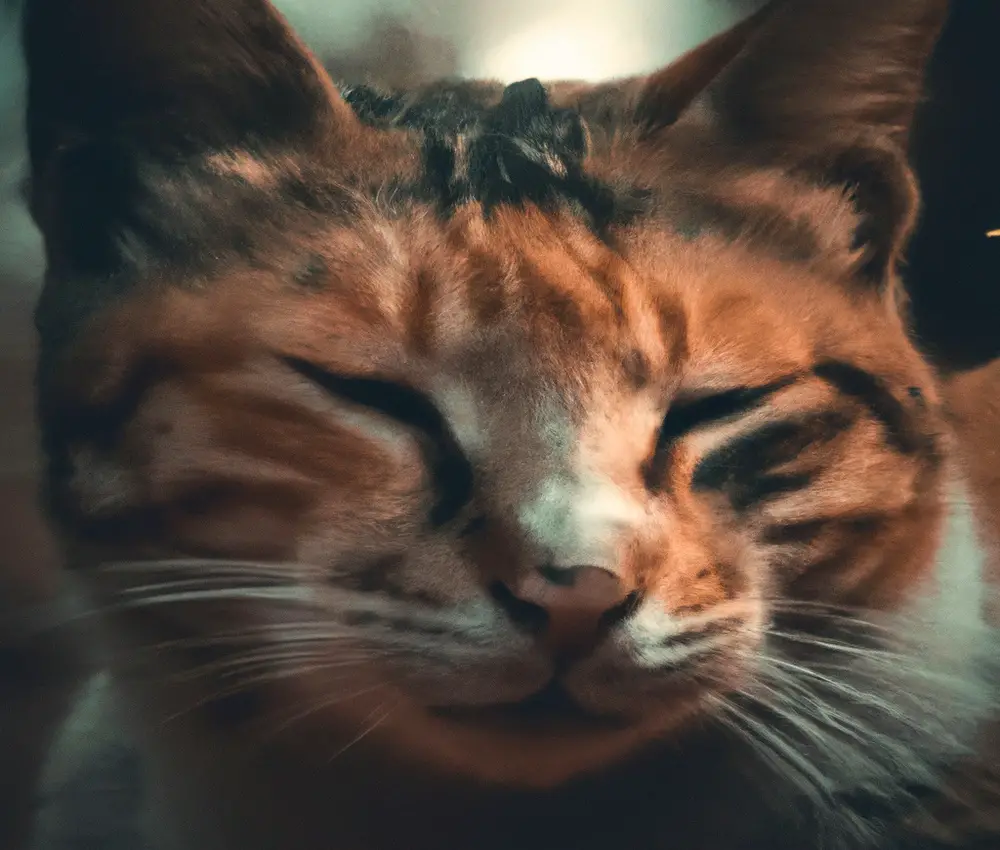
Sideways Running – A Playful Behavior
Have you ever wondered why your cat arches her back and runs sideways during playtime?
Well, let me enlighten you about this adorable behavior! Sideways running is a playful behavior commonly seen in cats.
It’s a way for them to release energy and have fun.
When cats run sideways, it’s often accompanied by an arched back and puffed-up tail, which adds to their playful display.
This behavior mimics hunting movements, allowing them to practice their hunting skills.
So the next time you see your cat going sideways during playtime, know that it’s just their playful nature shining through!
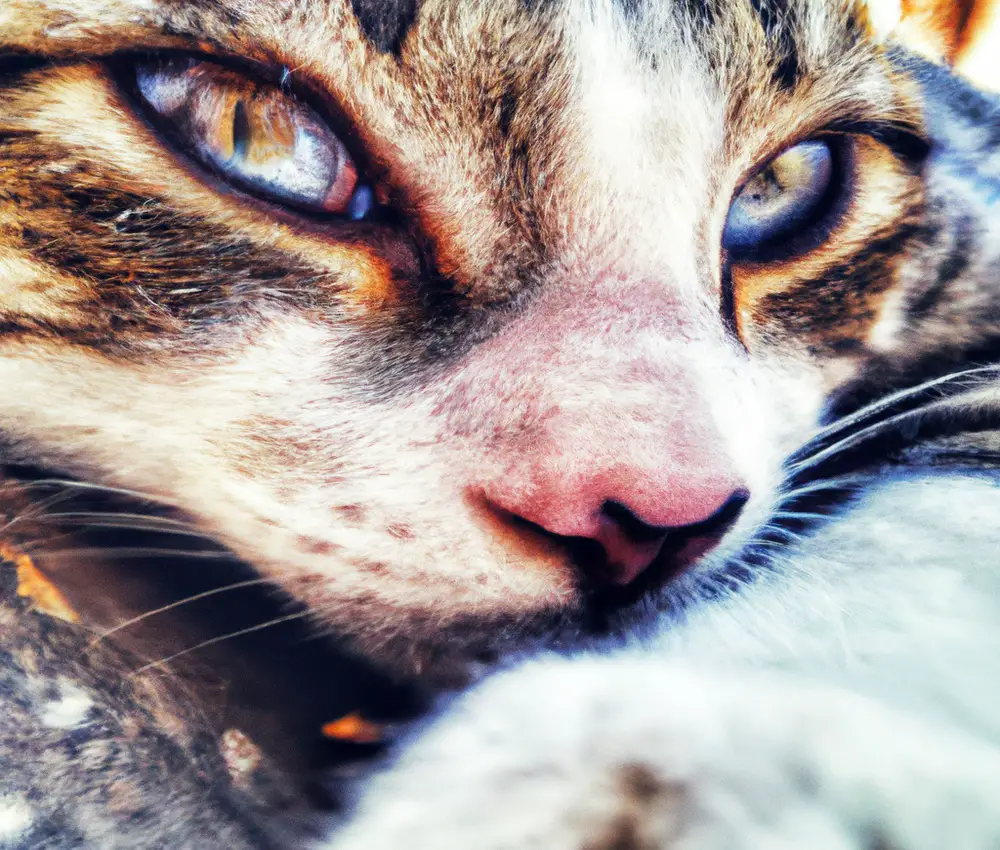
The Hunting Instinct
Cats have a strong hunting instinct ingrained in their DNA. This instinct stems from their ancestors who were skilled hunters.
The hunting instinct is an inherent behavior that drives cats to stalk, chase, and capture prey.
Even domesticated cats display this behavior during playtime or when they see something moving. It’s their way of practicing their hunting skills.
When a cat arches her back and runs sideways, it’s an indication that she is in “prey mode” and ready to pounce.
This behavior allows cats to ambush their prey effectively. So, next time you see your cat doing that, remember it’s just her natural instinct at play!
Body Language Clues to Look For
Body language is an important way for cats to communicate their feelings and intentions. Here are some clues to look for:
- Tail position: A relaxed, slightly curved tail indicates a content cat, while a puffed-up tail may mean they are frightened or angry.
- Ears: If your cat’s ears are forward and relaxed, they are likely calm and interested. However, flattened or backward ears can indicate aggression or fear.
- Purring: A rhythmic purr usually means your cat is happy and content. But be cautious if they are purring excessively or in combination with other signs of distress.
- Body posture: A relaxed, stretched-out position means your cat feels secure. Conversely, hunched or crouched body posture suggests anxiety or defense mode.
- Eye contact: Direct eye contact from your cat is generally a sign of trust. Dilated pupils could indicate excitement or fear, while narrowed pupils may signal aggression.
- Vocalizations: Different vocalizations, such as meowing, hissing, or growling, convey different emotions. Pay attention to the context and accompanying body language.
- Body rubbing: If your cat rubs against you or furniture, they are marking their territory and showing affection.
Remember, it’s essential to consider the overall context and observe multiple clues together to interpret a cat’s body language accurately.
Arching Back and Sideways Running: What’s the Connection?
When your cat arches her back and runs sideways during play, it’s often a combination of sensory overload, exercise, mimicking hunting tactics, and social bonding. Let’s explore the connections!
The Role of Sensory Overload
Sensory overload plays a crucial role in why cats may arch their backs and run sideways during play.
When their senses become overwhelmed, they may react with these behaviors as a way to release built-up energy and regain control.
The combination of visual stimulation, fast movements, and excitement can trigger a sensation overload for your cat.
To help avoid sensory overload, provide a calm and enriched environment for your feline friend and allow them to have regular play sessions to release energy in a controlled manner.
Release of Energy and Exercise
Release of energy and exercise are key factors in understanding why a cat may arch their back and run sideways during playtime. When a cat engages in these behaviors, it’s a natural way for them to release pent-up energy and maintain their physical fitness.
It allows them to stretch their muscles and get their heart rate pumping.
Additionally, it’s a fun and stimulating way for them to engage in play and explore their surroundings. So, if you see your cat doing these playful antics, rest assured that it’s a healthy and natural behavior for them!
Mimicking Hunting Tactics
Mimicking hunting tactics is a common behavior in cats. When they arch their backs and run sideways, they are imitating the stance and movements of a predator ready to pounce.
This behavior is instinctual and serves a few purposes.
Firstly, it makes them look bigger and more intimidating to potential prey or threats. Secondly, it allows them to maintain balance and agility while in motion.
Lastly, it helps them practice their hunting skills and release pent-up energy.
So, if you see your cat doing this during playtime, it’s just their natural instincts at work!
Social Bonding and Communication
Social bonding and communication are crucial aspects of a cat’s behavior.
Cats use various ways to bond and communicate with their fellow felines and even humans.
They engage in activities like grooming each other, rubbing against each other, and even sharing sleeping spaces.
Through these behaviors, cats establish a sense of trust and closeness, strengthening their social connections.
Communication is also an essential part of their social interactions.
Cats use body language, vocalizations, and scent marking to convey their emotions and intentions to others.
By understanding these behaviors, we can better communicate and bond with our feline friends.
Signs of a Content and Healthy Cat
A content and healthy cat will display signs such as a relaxed tail position and movement, ears and whiskers angled forward, dilated pupils, and a confident body posture with fluid tail movements.
Tail Position and Movement
The position and movement of your cat’s tail can provide valuable insights into their emotions and intentions.
Here are a few key points to keep in mind:
- Upright and relaxed: When your cat’s tail is held high but in a relaxed manner, it typically indicates contentment and confidence. This is often seen when they are greeting you or exploring their environment.
- Fluffed up: If your cat’s tail appears puffed or fluffed, it could be a sign of fear, agitation, or arousal. They may feel threatened or excited, and it’s important to approach with caution and give them space if they seem uncomfortable.
- Twitching or lashing: Rapid movements or twitching of the tail can signify irritation, annoyance, or even aggression. Pay attention to other body language cues to understand the overall context and avoid potential conflicts.
- Low and tucked between legs: A cat tucking their tail between their legs indicates fear, submission, or anxiety. They may be feeling intimidated or stressed, and it’s important to create a calm and safe environment for them.
Keep in mind that these are general guidelines, and each cat may have their own unique behaviors and expressions.
By observing and understanding their tail movements, you can strengthen your bond and provide appropriate care and interaction.
Ears and Whisker Angle
Ears and whisker angle are important indicators of your cat’s mood and body language. When your cat’s ears are forward and whiskers are relaxed, it usually means they are calm and content.
If their ears are flattened and their whiskers are pointed forward or downward, it might suggest aggression or fear.
Take note of these subtle cues to better understand your cat’s emotions and ensure a harmonious relationship.
Pupil Dilation
Pupil dilation is a phenomenon observed in cats where their pupils become larger. This can happen due to various reasons such as excitement, fear, or playing.
During playtime, a cat’s pupils may dilate as a result of heightened arousal and focus on their surroundings.
It is a natural response that helps them gather more light and enhance their visual perception. So, when your cat arches her back and runs sideways during play, her pupil dilation is a sign that she is fully engaged and enjoying the activity.
Body Posture and Tail Movements
Body posture and tail movements in cats can reveal important information about their emotions and intentions. Here are some key things to look out for: Body posture:
- Relaxed: A content cat will have a relaxed body posture. Their body will be loose, with their legs tucked comfortably underneath them.
- Stiff: If your cat’s body appears stiff and tense, it may indicate fear or aggression. Their muscles may be taut and their tail puffed up.
- Flat back: When a cat arches their back, it can indicate they are feeling threatened or defensive. This posture is commonly seen during play or when encountering another animal.
Tail movements:
- Curled: When a cat’s tail is curled, it typically signifies contentment and relaxation.
- Twitching: A twitching tail can indicate excitement or anticipation, especially during play or hunting behavior.
- Puffed up: A puffed-up tail is a sign of fear or aggression. It is a way for cats to appear larger and more intimidating.
Remember, every cat is unique, and their body language may vary. By understanding and observing their body posture and tail movements, you can better understand your cat’s feelings and create a harmonious environment for them.
Tips for Encouraging Healthy Play
Encourage your cat’s healthy play with these tips.
Providing Adequate Physical and Mental Stimulation
Providing adequate physical and mental stimulation is essential for your cat’s well-being. Here are some tips:
- Playtime: Engage in interactive play sessions with your cat using toys like wand teasers or laser pointers to encourage exercise and mental stimulation.
- Puzzle feeders: Use puzzle toys or treat dispensers to make mealtime more engaging, stimulating your cat’s problem-solving skills.
- Vertical space: Offer climbing trees, shelves, or window perches to cater to your cat’s natural inclination to climb and observe their surroundings.
- Rotate toys: Regularly switch out your cat’s toys to keep them interested and prevent boredom.
- Scratching posts: Provide scratching posts or boards to fulfill your cat’s urge to scratch, while protecting your furniture.
Remember, a well-stimulated cat is a happy and content cat!
Choosing the Right Toys
Choosing the right toys for your cat is important to ensure they have a safe and enjoyable playtime experience. Here are some tips to help you make the best choices:
- Consider your cat’s preferences: Cats have different preferences when it comes to toys. Some may enjoy chasing and pouncing on balls, while others prefer interactive toys like puzzle feeders. Observe your cat’s behavior and choose toys that align with their interests.
- Opt for interactive toys: Interactive toys, such as wands with feathers or strings, can engage your cat’s natural hunting instincts. These toys allow them to exercise and mentally stimulate their minds while having fun.
- Check for safety: Always prioritize your cat’s safety by choosing toys that are made of non-toxic materials and do not have small parts that could be easily swallowed. Avoid toys with strings or cords that could become a choking hazard.
- Rotate the toys: Cats can get bored easily, so it’s a good idea to rotate their toys regularly. This keeps their playtime fresh and exciting, and prevents them from losing interest in the toys.
- Consider your cat’s age and energy level: Kittens have different play and energy levels compared to adult cats. Provide toys that match your cat’s age and energy level. Kittens may benefit from toys they can wrestle with, while older cats may enjoy toys that encourage mental stimulation.
Remember, the right toys can not only provide entertainment but also promote physical and mental well-being for your feline friend. So, choose wisely and let the playtime begin!
Interactive Playtime with Your Cat
Sure, here’s the content focusing solely on the heading “Interactive Playtime with Your Cat”: Interactive playtime is a great way to bond with your cat and keep them mentally and physically active. Here are some tips for engaging play sessions:
- Use toys: Cats love toys that mimic prey, such as feather wands or toy mice. Experiment with different types to see what your cat enjoys most.
- Get interactive: Instead of just tossing a toy, actively engage with your cat. Move the toy in a realistic manner to simulate hunting and pouncing.
- Vary the play: Switch up the toys and play techniques to keep things interesting. Cats can quickly get bored with repetitive play, so keep it fresh.
- Incorporate scratching: Use a scratching post or cardboard scratcher during playtime. This helps satisfy their natural scratching instincts.
- Timing is key: Play with your cat when they are most active, which is typically morning and evening. Short, frequent sessions are better than one long session.
Remember, interactive playtime is a great way to keep your cat physically fit and mentally stimulated. Have fun and enjoy bonding with your feline friend!
Creating an Encouraging Environment
Creating an encouraging environment for your cat’s playtime is essential to fostering their mental and physical well-being.
Here are some tips to help you create an environment in which your cat feels safe and comfortable to play:
- Provide interactive toys: Give your cat toys that stimulate their natural hunting instincts. Toys like feather wands, laser pointers, or puzzle toys can keep them engaged and active during play.
- Designate play areas: Set up specific areas in your home where your cat can freely play and explore. These areas should include things like scratching posts, climbing trees, and cozy spots for them to hide or rest.
- Use positive reinforcement: Encourage your cat to play by rewarding them with treats or praise when they engage in active play behavior. This positive reinforcement will help them associate playtime with positive experiences.
- Create a secure and calm environment: Reduce any potential stressors in the environment that may hinder your cat’s play behavior. Ensure they have access to hiding spots, a peaceful feeding area, and a clean litter box.
- Set a regular play routine: Cats thrive on routine, so establish a consistent play schedule that works for both you and your feline friend. Aim for at least two short play sessions per day to keep them physically and mentally stimulated.
By incorporating these tips into your cat’s routine, you’ll be providing them with the perfect environment to engage in healthy and enjoyable playtime.
Have fun playing with your furry friend!
Frequently Asked Questions
Is it normal for my cat to arch her back and run sideways while playing?
It is completely normal for cats to arch their backs and run sideways while playing. This behavior is actually a display of excitement and prey instincts.
By arching their backs, cats make themselves look bigger and more intimidating, while running sideways helps them change direction quickly.
It’s like their version of a game of “attack and retreat” with an imaginary prey. So, if you see your cat doing this, don’t worry! It’s just their natural way of having some fun.
How can I tell if my cat is experiencing sensory overload?
If you’re wondering how to tell if your cat is experiencing sensory overload, there are a few signs to look out for. One of the most common indicators is if your cat suddenly becomes very restless and starts pacing around the room.
They may also start growling or hissing, and their pupils might dilate.
When cats are overwhelmed, they may also try to hide or seek a safe space. It’s important to create a calm environment and give them some time alone to relax.
Final Verdict
The arching back and sideways running behavior exhibited by cats during play is not only intriguing but also serves several purposes in their lives. It is a way for cats to communicate, release energy, mimic hunting tactics, and bond with their human companions.
Understanding the science behind these behaviors can help cat owners better interpret their feline friends’ body language and ensure their cats are healthy and content.
By providing adequate physical and mental stimulation, choosing the right toys, engaging in interactive playtime, and creating an encouraging environment, cat owners can encourage healthy play and strengthen their bond with their furry companions. Ultimately, these behaviors are a natural part of a cat’s instinctive and playful nature, and by embracing and understanding them, we can cultivate a deeper connection with our beloved feline friends.

